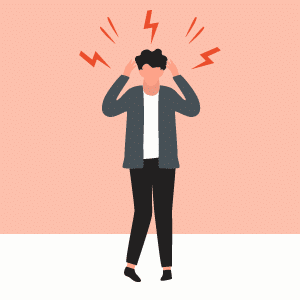Physical Effects of Opioid Addiction

What Are the Physical Effects of Opioid Addiction?
Opioid addiction can cause a range of mental and behavioral issues stemming from changes in the brain. These changes are likewise responsible for the physical effects of Opioid addiction (such as dry mouth and flushed skin). Because these physical effects can be so powerful, Opioid addiction has become more widespread than ever in America. In 2017, Opioid addiction affected 2.1 million people in the United States. The damage caused by Opioid addiction resulted in over 47,000 fatal overdoses – a 600% increase from 1999. As of January 2019, over 130 people in the U.S. die per day due to an Opioid overdose.
Short-term physical effects |
Long-term physical effects |
|
Brain |
Block pain signals, drowsiness | Feel pain more intensely, physical dependence on drugs |
Body |
Nausea, vomiting, itchy or flushed skin, constipation, slowed breathing and heart rate, etc. | Constipation, indigestion , vomiting, |
When Opioids enter the body, regardless of the route of administration (such as taking a pill or smoking), they travel to the brain and activate specific receptors responsible for feelings of pain and pleasure. While some Opioids produce physical effects faster than others – Heroin, for instance, is a fast-acting Opioid – a “rush” of euphoria is associated with the narcotics. The initial, pleasurable sensation is, in part, to blame for the mechanisms that cause addiction, though its intensity depends on the strength of the Opioid and the person’s level of drug tolerance.
Immediate Physical Effects of Opioid Use
- Rush of euphoria
- Dry mouth
- Flushed skin
- Nausea
- Vomiting
- Severe itching
- Reduced breathing rate
- Nodding in and out of consciousness

In the hours following the onset of Opioids’ immediate effects, people may continue to be drowsy with a slower-than-normal heart and breathing rate. At times, these effects are life-threatening and can signify potential brain damage or overdose death. An overdose can occur if a person’s body is unable to regulate the amount of Opioids in its system. Breathing is reduced to the point of hypoxia, meaning air can no longer reach the brain. If left untreated, hypoxia can cause loss of consciousness, coma, permanent brain damage, and death.
For extremely powerful Opioids like Fentanyl, Carfentanil, and Dsuvia® (substances that can be hundreds of times more potent than Morphine), the physical effects are nearly instantaneous. In an interview with The New York Times, one man described his fear of Fentanyl, despite years of Heroin abuse.
It doesn’t take a second for it to hit you. All I remember is pushing in the needle, and three hours later I am getting up off the ground.
64-year-old man with Heroin Use Disorder, 2019
Medical Complications from Long-Term Opioid Abuse
Over time, the effects of Opioid addiction (such as poor nutrition and injection drug abuse) can lead to a variety of hard-to-reverse physical complications.
Physical effects of Opioid addiction from long-term abuse include:
- insomnia
- constipation
- stomach cramping
- sexual dysfunction (in men)
- irregular menstrual cycles (in women)
Moreover, while Opioids block pain signals, internal injuries may persist and worsen unnoticed. The extent of such damage is typically only revealed once an individual decides to detox. For example, some who contract Hepatitis experience severe stomach pains (near their liver). However, an individual who continues to abuse Heroin is unlikely to feel any pain while using, leaving the virus untreated. Moreover, people who abuse Opioids are less likely to have adequate healthcare to treat their illnesses. In this way, viral diseases like Hepatitis and HIV are rapidly spread throughout communities of individuals who share needles.
No matter how they ingest the drug, chronic Heroin users experience a variety of medical complications, including insomnia and constipation.
'What Are the Medical Complications of Chronic Heroin Use?', 2018

Opioid abuse from specific routes of administration can cause potentially permanent damage to the brain, heart and blood vessels, lungs, kidneys, and liver. Injecting Heroin, for example, can lead to collapsed and/or scarred veins, bacterial infection, viral infection (like Hepatitis), and boils. Snorting Heroin or crushed prescription Opioids can damage nasal passages and puncture the septum.
Additionally, additives like starch, sugar, powder milk, and quinine can clog vessels throughout the body, cause infection and arthritis, kill cells, and lead to allergic reactions. Because Opioids negatively affect lung function, people can also develop pneumonia and tuberculosis at any time.
Physical Effects of Opioid Withdrawal
Once an individual has developed a dependence on Opioids (or needs to take them in order to feel normal), symptoms of withdrawal are likely to occur upon quitting or reducing dosage. Physically and mentally, withdrawal can be extremely difficult to endure and, in some cases, life-threatening without the help of medical professionals. Physical withdrawal symptoms may set in within a few hours of the last dose and last up to a week or more, depending on the severity of the addiction.
Physical symptoms of Opioid withdrawal include:
- Cold flashes or “goose bumps”
- Dilated pupils
- Fever
- Sweating
- Diarrhea and upset stomach
- Nausea and vomiting
- Severe muscle and bone pain
- Teary eyes
- Uncontrollable leg movements
To ease painful withdrawal symptoms, recovery professionals recommend attending a medically-supervised detox center to receive addiction treatment medications. Opioid agonists like Methadone and Buprenorphine can help to reduce drug cravings and also ease body aches and pains. Following detox, an inpatient or outpatient rehab is a form of lasting addiction treatment for most people.